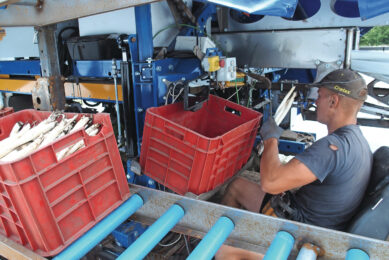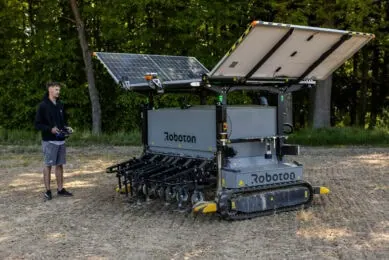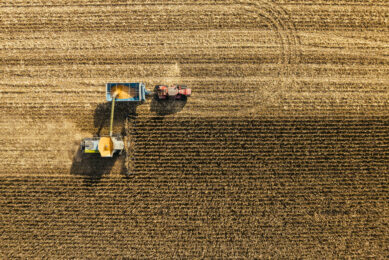Capital expenses – Part 2: ‘How one farmer saved $1.7M by thinking smaller, not bigger’

Craig Rupp, CEO of Sabanto and a pioneer in autonomous farming, shares his perspective on the practical realities of autonomy in agriculture. As one of the first to operate a fleet of autonomous tractors, Rupp offers unique insights into why a standard autonomous tractor may often be more effective than a dedicated field robot. In this series opinion pieces, he explores the reality of autonomous farming and what it could mean for farmers today.
In Part 1, I introduced Justin Yirsa, a farmer for whom the era of single, massive machines was over. Instead of doubling down on big iron, he decided to go smaller, run smarter, and stretch every dollar further. The real breakthrough was not just using autonomy, it was rethinking the whole system: smaller tractors, smaller seeders, and running them longer, harder, and cheaper.
It was not about doing less, it was about doing more with less.

The winner
Justin did not just pick a tractor size at random. He dwelled on every horsepower and drill size option, weighing the trade-offs carefully. Go too small, and the cost of the autonomous retrofit would dominate the system price. Go too big, and the tractor itself would drive the capital cost right back up to the levels he was trying to avoid. He needed a platform that was big enough to be productive, small enough to stay cost-effective, and offered a little margin for redundancy and downtime.
After working through the numbers, he found the sweet spot landed around the 120 HP range, and for good reason:
- The maximum drill size was nearly 20 foot, a common, off-the-shelf size.
- Tractors at 120 HP still came in ROPS (non-cab) versions, saving on the order of $15,000 per tractor.
- He could cover his acres with just two autonomous systems.
With his current 60-foot seeder at 6.5 mph for 12 hours/day, Justin figures he can match productivity by running two 20-foot seeders at 5 mph, 24 hours/day.
To put the cost difference in perspective, compare
- 1 Deere 9RX710 tractor + Bourgault 3725QDA seeder
- 2 Deere 5120M tractors + 2 Deere 1590-20 seeders

The difference is staggering. Capital expense with the smaller systems is 77% less, a $1.78 million difference. And in Montana, that will buy you a hell of a lot of land.

The setup
Justin did not need new iron to test his theory. He started by recycling equipment they already had sitting round and tapping into the secondary market for solid seeders..
- Tractor: Justin had a 2018 Deere 5115M that had been sitting in their machine shed for years, mostly used as a glorified forklift. We already supported this model and have thousands of autonomous hours on it.
- Seeder: Justin found a 15-foot Deere 1590 drill on TractorHouse.com sitting in Nebraska. The machine was in great shape, still solid as the day it was built.
To maximize the box for seed, he went with a 300-gallon liquid fertilizer. Monitoring the seed was a priority, so we added a Dickey-john Vanguard monitor with their Recon seed blockage sensors. Monitoring the fertilizer was also a priority, so we added a Raven RFM 15P flow meter. Nothing fancy. Nothing over-engineered. Just practical, off-the-shelf, reliable parts bolted together with some common sense.
Nicknamed Casper, Justin’s machine was deployed on April 10th in Big Sandy, Montana. Casper was initially deployed on Justin’s smaller fields, less than 250 acres. Runs averaged 7.4 acres/hour with the 15-foot, 5 mph system. It was noted we were hitting nearly 9 acres/hour just working headlands – over 40 acres of them.
Watch the autonomous John Deere in action across the vast, empty plains of Montana.
Closing thoughts
Justin did not just swap out one machine for another. He flipped the whole model. Instead of chasing bigger iron, he focused on capital efficiency – maximizing every dollar spent, every acre covered, and every hour worked. Autonomy was not the product he bought; it was the tool that made the model possible.
In a world where margins are tighter than ever, and farmers realize capital tied up in depreciating equipment is now a liability, Justin showed what a different and better path could look like.
It is not about running bigger. It is about running smarter. The future will not belong to those with the biggest machines. That, my friends, will be frightening to those that measure success in tons of iron sold.
And the autonomous John Deere? It keeps going — steady and unfazed through the night.



